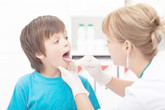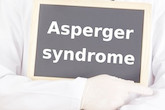Impetigo Treatment Options
Impetigo is a highly contagious superficial skin infection that can be caused by two bacteria: staphylococcus Aurelius (staph) and streptococcus (streph). Although impetigo can affect adults, it mostly afflicts children aged between 2 and 6 years old. The infection spreads rapidly in crowded settings such as day care centers,schools, prisons, military installations, nursing homes etc.
There are two types of impetigo, bulbous and non-bulbous impetigo. Non-bulbous impetigo manifests when the skin responds to the presence of bacteria while non-bulbous impetigo occurs due to the presence of staphylococcus toxins on the skin with no need for a host response. The infection can be easily diagnosed after the manifestation of symptoms which include the appearance of red papules or macules that rapidly grow into vesicles. The vesicle then bursts to form a lesion whose contents dry out leaving behind honey colored crust. In most cases, impetigo resolves itself within two to three weeks.
Impetigo treatment options
The objectives of impetigo treatments include relieving the discomfort, preventing the infection from spreading to other areas of the skin, preventing the recurrence of the infection and restoring the skin' cosmetic appearance. Most of the treatments are inexpensive, affective and have very few side effects.
Clinically, antibiotics are the mainstay of impetigo treatments. The drugs can either be delivered topically as creams and ointments that you can apply directly onto the sores. Oral antibiotics are also recommended for the treatment of impetigo as they help prevent recurrence.
Topical antibiotics
This is considered the best treatment for individuals with localized impetigo. Topical antibiotics isolate the eradicate the bacteria and prevent it from spreading to other individuals. The topical agent has to be applied after the removal of infected crust with soap and water. The most common topical antibacterial treatment are:
Mucipirocin - This is effective against lesions as well as nasal carriers. Impetigo should clear up after seven days if Mucipirocin is applied to the affected area at least two times daily for seven days.
Rettapamulin - This is an FDA approved antimicrobial that has been proven to be effective against S Aurelius and Pyogenesis bacteria. It has been proven effective against bacteria that are resistant to other antibiotic drugs.
Oral antibiotics
Antibiotic tablets are often prescribed if the skin infection appears to be spreading rapidly or when antibiotic creams are unable to fight the infection. Oral antibiotics fight the bacteria in the respiratory track and other internal passages thus helping prevent a recurrence of the infection. Popular oral antibiotic include penicillins, macrolides, cephalosporins, amoxicillin etc.
Natural treatment options for impetigo
Apart from the clinical treatment options, there are a number of home remedies and lifestyle changes that can be used to effectively treat impetigo. Below are some home remedies whose effectiveness has been proven.
Turnip and garlic - To ensure that quick healing of the infection occurs, it is important to avoid irritating the skin. Crushed garlic can either be directly applied to the blisters or chewed to relieve respiratory track infections. This helps relieve the itching caused by the infection thereby accelerating the healing process.
Aloe Vera - Aloe Vera is an affective treatment for a wide range of skin infections and has been extensively used in the treatment of vertigo. It has strong antimicrobial properties and you ought to rub the extract directly and gently on the infected area.
Lavender oil - As your immune system fights off the infection, new skin would need to row to replace the infected portions. Lavender oil helps soften up the crusts and lessen the irritation caused by the infection. Use cotton pads to apply two to three drops of Lavender oil. Ensure that you use a different cotton pad for each blister to prevent spreading the infection. This procedure should be repeated up to 4 times every day till the blister clear up completely.
Medicinal honey - According to research carried out at The University of Waikato in New Zealand, honey's antibacterial properties can inhibit the growth of both types of impetigo-causing bacteria. Honey is recommended for use when the infection seems resistant to all other impetigo treatment options including topical and oral antibacterial therapy. Honey has no adverse effects on living tissue making it safe for application both on the skins surface and into sinuses and cavities to kill all the bacteria. You must however ensure that you use medicinal honey which is pure. Supermarket product may have been infused with other products that may harm your delicate membranes in your cavities.
Skin care - Avoid touching or scratching the blisters or lesions. The area has to be cleansed several times a day. The crust usually harden after the first day and should be removed by soaking the infected area in warm water for about 20 minutes, after which the lesions should be covered with gauze and a bandage.
| Written by: | Michal Vilímovský (EN) |
|---|---|
| Education: | Physician |
| Published: | June 6, 2013 at 12:28 AM |
| Next scheduled update: | June 6, 2015 at 12:28 AM |
Related articles
Get more articles like this in your inbox
Sign up for our daily mail and get the best evidence based health, nutrition and beauty articles on the web.






Ache in left arm that you should not ignore
Alkaline water dangers: why you should not drink it
How to Avoid Sleepiness While Studying?
23 Foods That Increase Leptin Sensitivity
Low dopamine (e.g. dopamine deficiency): causes, symptoms, diagnosis and treatment options
Swollen taste buds: the ultimate guide to causes, symptoms and treatment
Thin endometrial lining: causes, symptoms, diagnosis and treatment
Pimples inside nose: the complete guide
Holes in tonsils: definition, symptoms, treatment and prevention
How to deal with an ingrown hair cyst
Allegra vs. Zyrtec vs. Claritin
How to get rid of phlegm (excessive mucus) in throat? Detailed guide to medical and home remedies, symptoms and causes
What causes stomach ache after meals?
Allergy to penicillin and alternative antibiotics
Liver blood test results explained